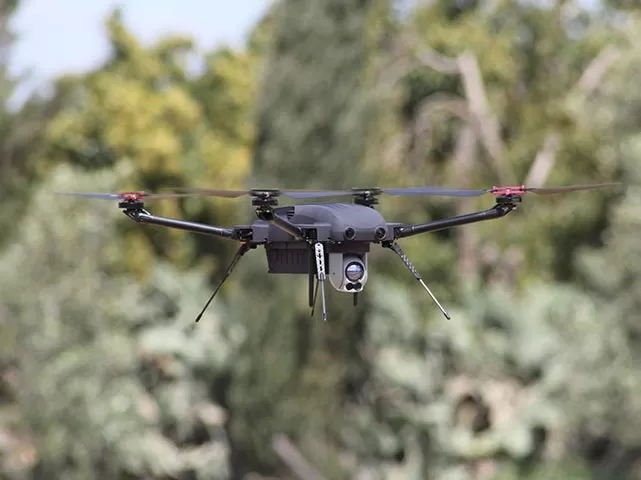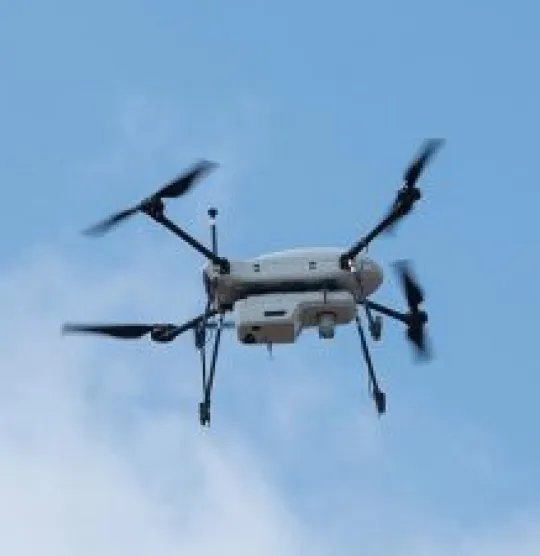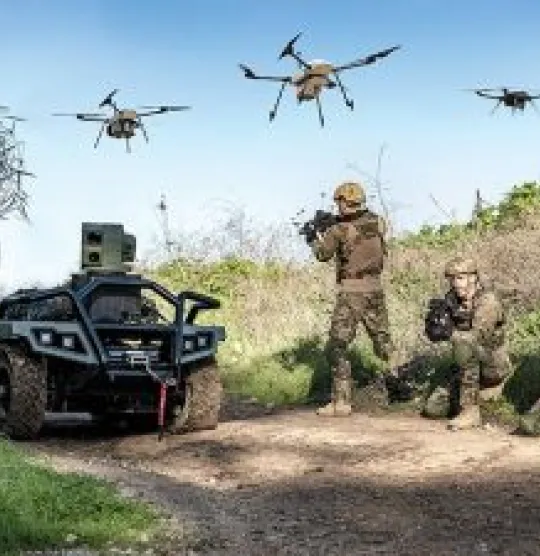
Drones and the Future of Battlefield
As the rules of warfare evolve with the rise of affordable and accessible UAS platforms, Elbit Systems is developing autonomous technologies to ensure superiority on the battlefield.
In the third decade of the 21st century, the evolving fronts of modern warfare have fundamentally changed the rules of engagement. As expensive and sophisticated military systems are increasingly replaced by more affordable and accessible products, defense industry leaders must swiftly adapt their portfolio to these dramatic shifts.
At Elbit Systems, a leader in international research and development, the team works tirelessly to excel in a battlefield that no longer follows traditional norms. To meet these challenges, the C4I and Cyber Division has established a new line of business dedicated to finding innovative solutions for Elbit Systems' global clients.
From Combat Support to Autonomous Logistics
"The applications of drones are incredibly diverse," explains Guy, a former senior Israeli defense official who joined Elbit Systems to lead the new line of business focused on robotic and autonomous technologies. "We’re talking about everything from small UAVs (stand alone or swarms) with 'end game' capabilities to robotic platforms (ground or air) delivering equipment to soldiers in the field. The range of solutions varies from the concept of operation (con-op) of maneuvering forces up to Homeland Security (HLS) and terrain dominance and protection."
Guy plans to leverage the group's extensive experience across the main business units to create synergy between them and deliver integrated solutions. "We are divided into four business units (UAV, UGS, Autonomy and Sensors), each addressing a different aspect of autonomy or HMT – from unique IPs for advanced sensors, DMS, autonomous pilot capabilities and avionic platform designs to the integration of all those capabilities to swarms of platforms carrying all relevant payloads to autonomously carry out the missions."
The goal is to create adaptive and flexible solutions to cater to a wide range of customers, not only military, facing the growing threats of autonomous systems or looking to adopt such technologies.
Supporting Maneuvering Forces
Guy frequently uses the term "low-altitude airspace" to describe a critical turning point in current and future warfare scenarios. "This is a new domain with many variables that need to be addressed because of the many new operators in the new battlefield who are filling it from drones and fixed wing UASs to loitering munitions and missiles moving close to the ground."
What may seem like a significant challenge also presents opportunities.
"Until unmanned aerial systems arrived on the battlefield, combat observations made by the maneuvering forces were horizontal, looking at the targets on the ground from a flat angle. The use of drones and low-altitude airspace provides a much deeper and three-dimensional understanding of threats in the area," Guy explains. This enhanced perspective makes it easier for combat forces to acquire and verify targets and protect themselves from other threats, especially in urban areas or mountainous terrain.
These technologies can also be adapted for border protection and national security missions. "It’s a completely different mission, but it relies on the same basic principles and capabilities" Guy explains. "The ability to observe from various (vertical) angles over a large area is a critical advantage in these missions as well."
"We've Passed the Point of No Return"
The battlefield's transformation was starkly evident during the intensified fighting in Ukraine and the extensive use of drones. "Take the FPV drone, which to our understanding became very popular in the Russia-Ukraine war, as an example," says Guy. "It’s a relatively cheap and easy-to-produce missile replacement that can function as a loitering munition or an anti-tank missile when fitted with the right warhead."
The widespread presence of these drones on the battlefield is due to their easy production and relatively low cost. "Countries on the eastern axis are producing hundreds of thousands of these drones. I don’t believe this situation is reversible; we’ve passed the point of no return," he asserts.
According to Guy, there is no stopping the use of drones, which will remain on future battlefields alongside other autonomous capabilities. The only way to cope with these changes is to create superiority in the low altitude airspace domain, through command, control, cyber, and electronic warfare, aiming to ensure that Elbit Systems' clients have the upper hand in dealing with the robotic threat.
The content of the article does not constitute business or financial information about Elbit Systems Ltd. (the "Company") and is not intended to be a basis for making investment decisions in the Company's securities. In order to obtain business or financial information about the Company, please refer to the reports and filings that the Company regularly publishes on the website of the U.S Securities and Exchange Commission (EDGAR) and on the notification system of the Tel Aviv Stock Exchange (Maya).
The article may contain forward-looking statements such as estimates, forecasts, estimates, plans, etc. that refer to future events that are considered forward-looking information as defined under the securities laws of Israel and the United States. There is no certainty that such information will be realized, in whole or in part, and the actual result may differ from what was presented in the article, among other things due to its dependence on external factors that are not under the control of the Company and that cannot be evaluated in advance. The forward-looking statements are based on the Company's estimates at the time of publication, and the Company has no obligation to update or correct this data.




